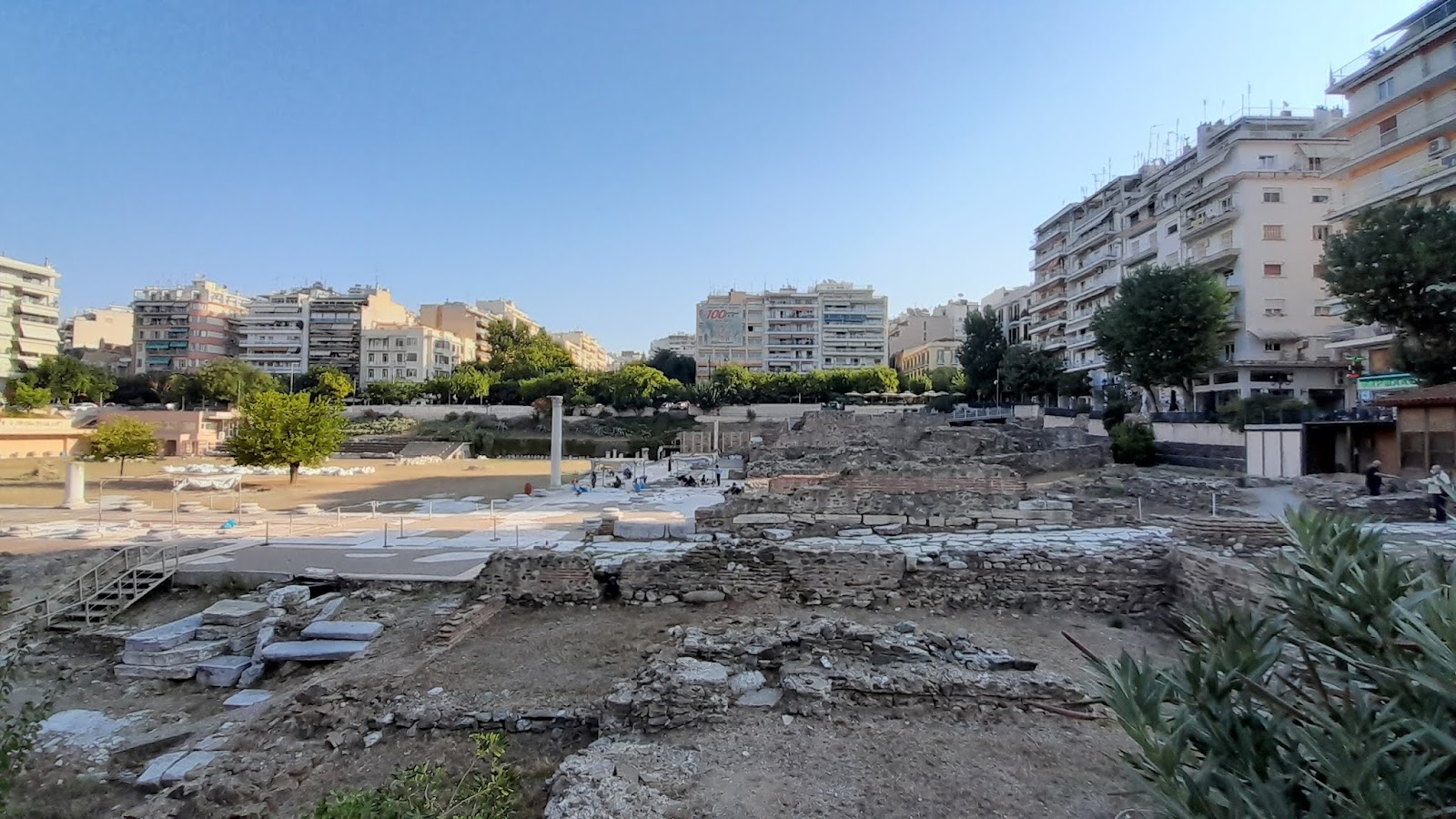Thessaloniki is the second largest city of Greece and the most important centre of the area. I personally found it beautiful and charming, perhaps more authentic than all the other places I have visited before. Not to forget that it is cheaper than Athens and it has got an astounding culinary offer! Thessaloniki has a fascinating history and a cosmopolitan character. I have learnt about its past thanks to the free walking tour of the upper city, and our fantastic guide, George. So much so, that I did another tour with him the following day, this time focused on Greek mythology. I cannot stress enough how informative and fun these free tours are. They are now a must in all the cities I go to!
To start off
with, Thessaloniki is in Macedonia, and I think the best thing for you
to do if, like me, you are not very familiar with the geopolitical aspects of
this region, is to check out a Youtube video or any online article on the
dispute between North Macedonia and Greece because of the name: Macedonia. It
might sound trivial for an outsider, but it is quite a heated topic in the
region.
The city’s
centuries-old multicultural history has been associated with great empires, as
it has known the Roman, Byzantine and Ottoman Rule. The town was
also greatly influenced by many ethnic and religious groups (Jews, Latins,
Armenians and others) as well as Greeks from Constantinople, Pontus (modern-day
northeastern Turkey) and Asia Minor (a.k.a. Anatolia). Its history is truly engrossing,
and I suggest you read up on it if you get the chance.
The numerous
monuments, dating to many historical periods, coexist in a singular and charming
way and manifest Thessaloniki’s historical multicultural and cosmopolitan
nature.
You can visit
four of Thessaloniki's main sites with a 15-euro combined ticket, which gives
you access to: the Rotunda (an early 4th century building which later
was converted into a Christian church), the White Tower (15th century)
which is the hallmark of the city, the Archaeological Museum, and the Byzantine
Museum, all worth visiting in my opinion.
The central
square, called Aristotelous Square is surrounded by monumental buildings
and open to the waterfront for a width of 100 metres and is a focal point of
the city.
Amongst the
Roman ruins are the ancient forum, the thermae, the hippodrome, the temples,
the Triumphal Arch of Galerius (Kamara), built in AD 305 to commemorate his
military successes in general in the eastern provinces of the Roman Empire.
Wandering
through the city you will see so many Byzantine monuments and that is why
Thessaloniki is justifiably considered an open-air museum of Byzantine art. In
addition, several amazing Ottoman monuments.
The byzantine
walls of the city are in the Old City (Ano Polis), and you’ll need to climb
quite a lot of stairs to reach this part of the city. Here you can find many
notable examples of Ottoman and traditional Macedonian architecture still standing,
alongside humble dwellings put up by the refugees who reached Thessaloniki in
droves, after the Greek defeat in Asia Minor, in 1922. Our guide told us this
area is completely different from the rest of the city, mainly because it has
not been affected by the big fire of 1917, which destroyed a large portion of
the city and left 70,000 people homeless.
What else…. Mount
Olympus is also worth a mention: you can kind of see it from most parts of Thessaloniki:
it is the highest mountain in Greece. At a height of 2,918m above sea level, it
towers over Northern Greece, and can be seen as far away as Thessaloniki. It is
situated on the borders of Thessaly and Macedonia. Our guide told us you can
take walks there and spend the night in a refuge. Unfortunately, I did not get
to experience this, but I plan to do it next time for sure.
If you want to get a real taste of the city, I would say ideally at least three days should be spent there.









No comments:
Post a Comment